Haus der Statistik (HdS) stands near Alexanderplatz, the central plaza in Berlin. HdS was built in the 1960s in what was then East Berlin to house the Stasi’s record-keeping department. The residential buildings surrounding HdS were also built during that era. Many of the area’s current residents have lived here since it was first built. Today, the aging infrastructure is going through a massive redevelopment process that will revitalize the HdS, which has for the most part stood empty after the fall of the German Democratic Republic (Deutsche Demokratische Republic or the DDR) (1949-1990), in order to facilitate creative uses, host city offices, and provide affordable housing. Meanwhile, the neighborhood’s residents are confronting a changing neighborhood as well as their own changing needs as they age. During the planning process for the redevelopment of the site, developers, researchers, and artists are examining its DDR past. Indeed, the entire street grid and urban fabric looked completely different before the master-planned development went in during the 1960s.
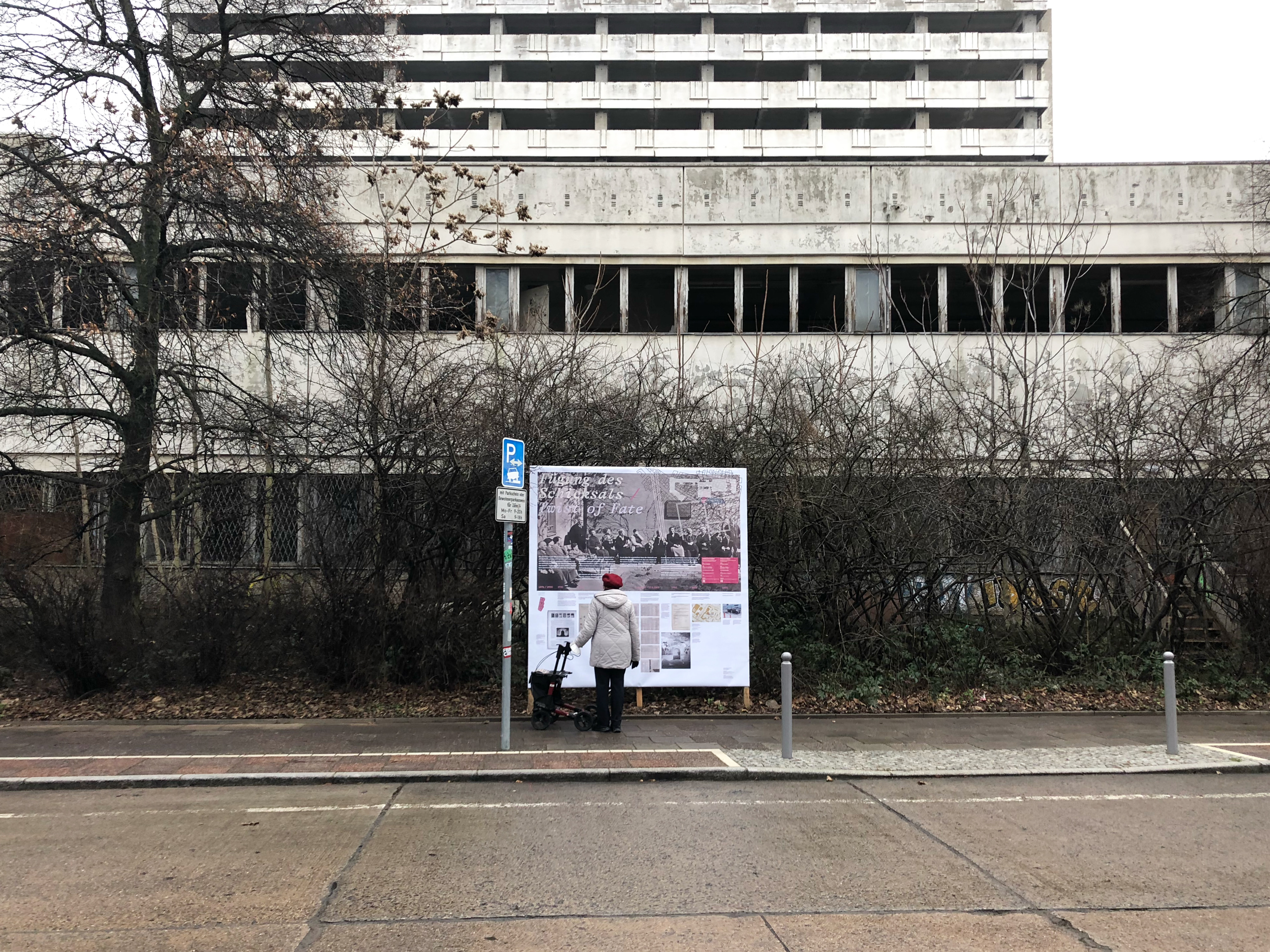
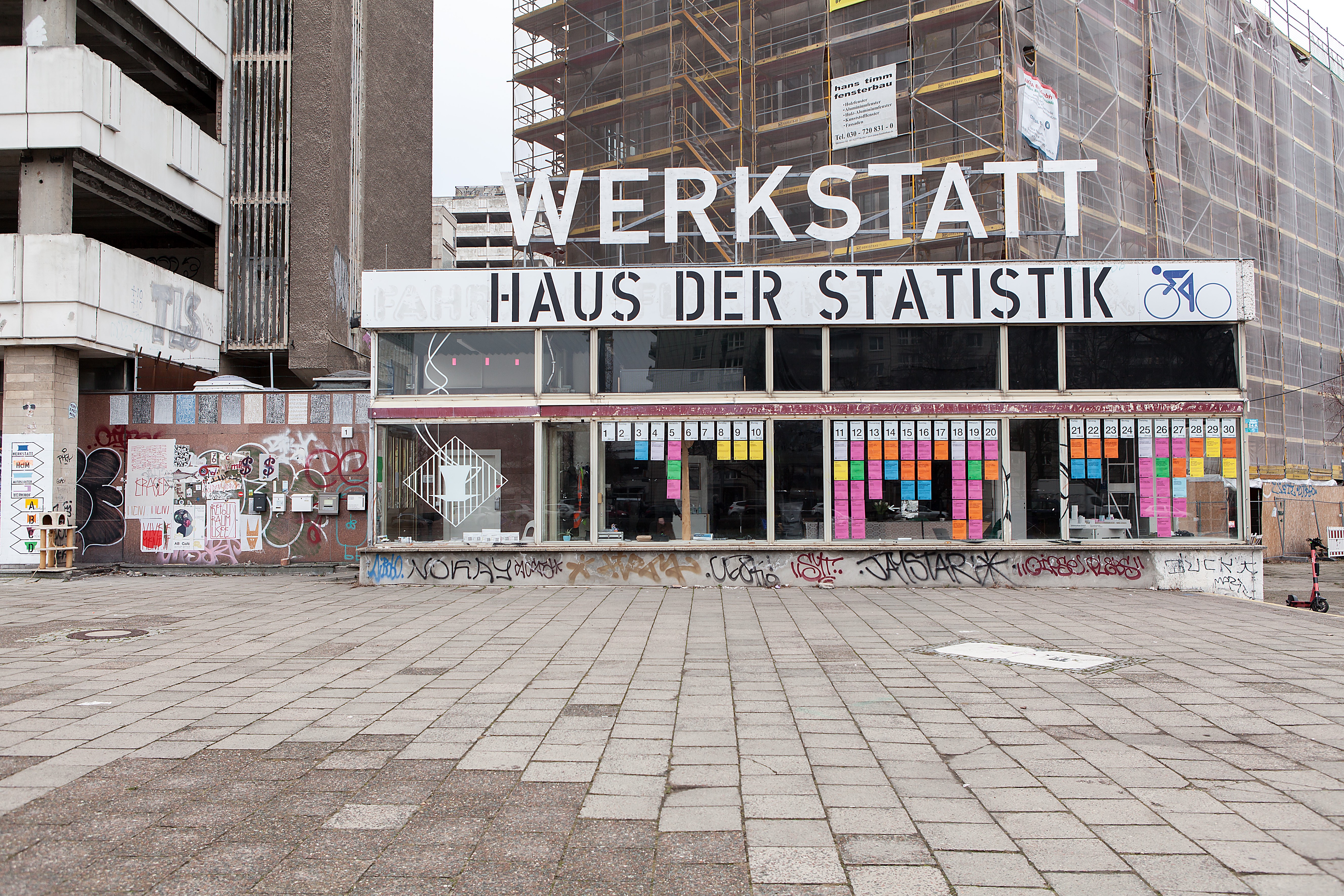
Local community groups are interested in revealing the invisible history of the neighborhood, especially the story of a former Jewish senior home that once stood where HdS is now. Although the senior home was established in 1931, its ownership was forcibly transferred to the Nazis in 1938, who shipped the 160 residents to concentration camps in 1942. The home was then used as a collection site for more than 2,000 elderly Jews before they too were transferred to camps. In collaboration with neighborhood groups, urban planner and public artist R Stein Wexler worked to reveal and tell this history.
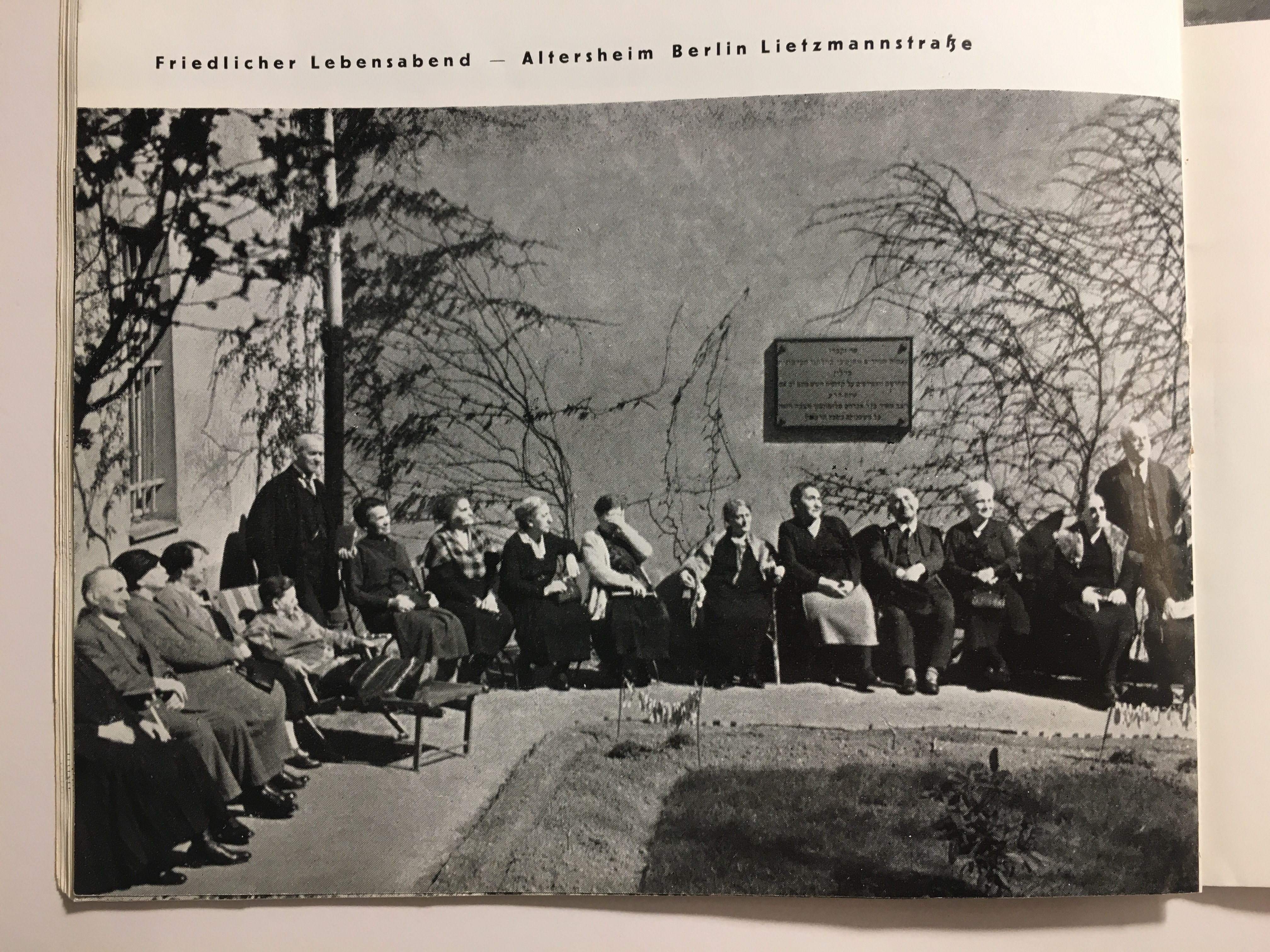
The first phase of the project involved the collection and analysis of in-depth archival and second-hand sources as well as coalition-building within the neighborhood community. At an open house event in June 2021, residents living near the site and local workers were invited to learn more about the history of the site and to read and help interpret historical files and newspaper pertaining to the site.
Key to the development of this project was close collaboration with residents and neighborhood organizations adjacent to the site. Artist R Stein Wexler and Kathrin Gerlof, long-time neighborhood resident and member of a neighborhood association board, developed a close relationship throughout the development of this project. Prior to engaging the broader public in the project, they spoke about their hopes and expectations.
R Stein Wexler: Two weeks before the public launch of the project, I think about what my goals are and what I want to achieve with the project. At the same time, I wonder what your goals are for this project and how you would define success?
Kathrin Gerlof: I live here in a neighborhood that wants to be a World Heritage Site. Postwar modernism was a promise in both East and West that war would no longer emanate from this soil. But the memories of evil, of the terror that people are capable of, have been covered over.
I dream of making the past visible to the people who live and visit here. Not with more museums and not with large monuments, but instead with a form of remembering that can be experienced at every turn. I hope that later, when the grounds of the House of Statistics have been reinvented and built, the place where the Gerlachstrasse Jewish Home for the Elderly once stood will invite all passers-by to pause. To think about the injustice that happened here, to wish that such a thing never happens again, and to encourage oneself to do something about it.
I believe that remembrance is possible across generations. And that forms can be found for it that enable us to think about responsibility. The House of Statistics was built in the GDR, and apparently no one at the time thought it necessary to commemorate the Jewish Home for the Elderly. If the place where it once stood were to now be built over again without any form of commemoration, we would have again chosen oblivion.
KG: What would be your dream if you could wish for it. What should the project "Remembrance of the Gerlachstrasse Jewish Home for the Elderly" look like? If we had money without end and help from many sides: What would you suggest we do with this memorial?
RSW: First of all, I don’t have a grand vision for this project, nor do I think that there’s a physical form that we need only to find in order to call this project a success. However, it would also be a lie to say that I don’t have dreams for the future of this site. They are, however, far more nebulous than say, a marble statue, a plaque, or museum exhibit.
I see the Fügung des Schicksals audio-visual installation as a step along a road toward remembrance. The process we use in this installation, of inviting neighbors to lend their voices to reading the names of former residents, resulting in a temporary educational and auditory installation is an approach that I would like to scale. That is to say, I would like to further engage Karl-Marx Allee neighbors in co-developing a remembrance piece that reaches beyond just the past but also touches the present and is relevant to the future.
We have the opportunity now to take advantage of the change which is coming to the neighborhood. My hope is that this small project lays the groundwork for a larger or more durable project to be integrated into the building process of the new construction. When I think about what that project will be, what it will look like, only adjectives come to mind: I want it to be affective but not dramatic; I want it to reflect the traumatic history of the site without overwriting the initial intended use of the site: as a home for people to peacefully grow older; I want it to be accessible but not didactic; I want it to be about the past but relevant to the future.
A pilot project was launched in Fall 2021 that involved an audio-visual installation on the exact site of the former senior home. A poster, measuring 2.5 by 2.5 meters containing images and a timeline about the site was installed in the first week of January 2022. Stein and her collaborators, including neighborhood liaisons, a sound designer, a graphic designer, and documenters, invited neighbors and Berliners to read the names of the former residents of the site. These volunteers booked half-hour slots over the course of three days, during which they sat with Wexler and up to three other volunteers to discuss the history of the site.
Participants were invited to write or draw their responses to the question “What do you want to be when you grow old?” This exercise drew attention to the taboo topic of aging and helped the volunteers identify with the names of the elderly people they would read. After this exercise, volunteers were invited to read the names and demographic data of the former residents of the site. The data was gathered by the Nazis as they shipped them to concentration camps in 1942. The readings were recorded, edited, and are now playing through speakers on loop from 8 am to 8 pm daily at the site of the educational poster.
Through this process, the story of this Jewish senior home will remain alive and relevant to contemporary and future residents and users of the site. It has additionally laid the groundwork for further interventions and programming at the site. Namely, Wexler is in the process of gaining support from the City of Berlin to continue developing remembrance formats commemorating this site.
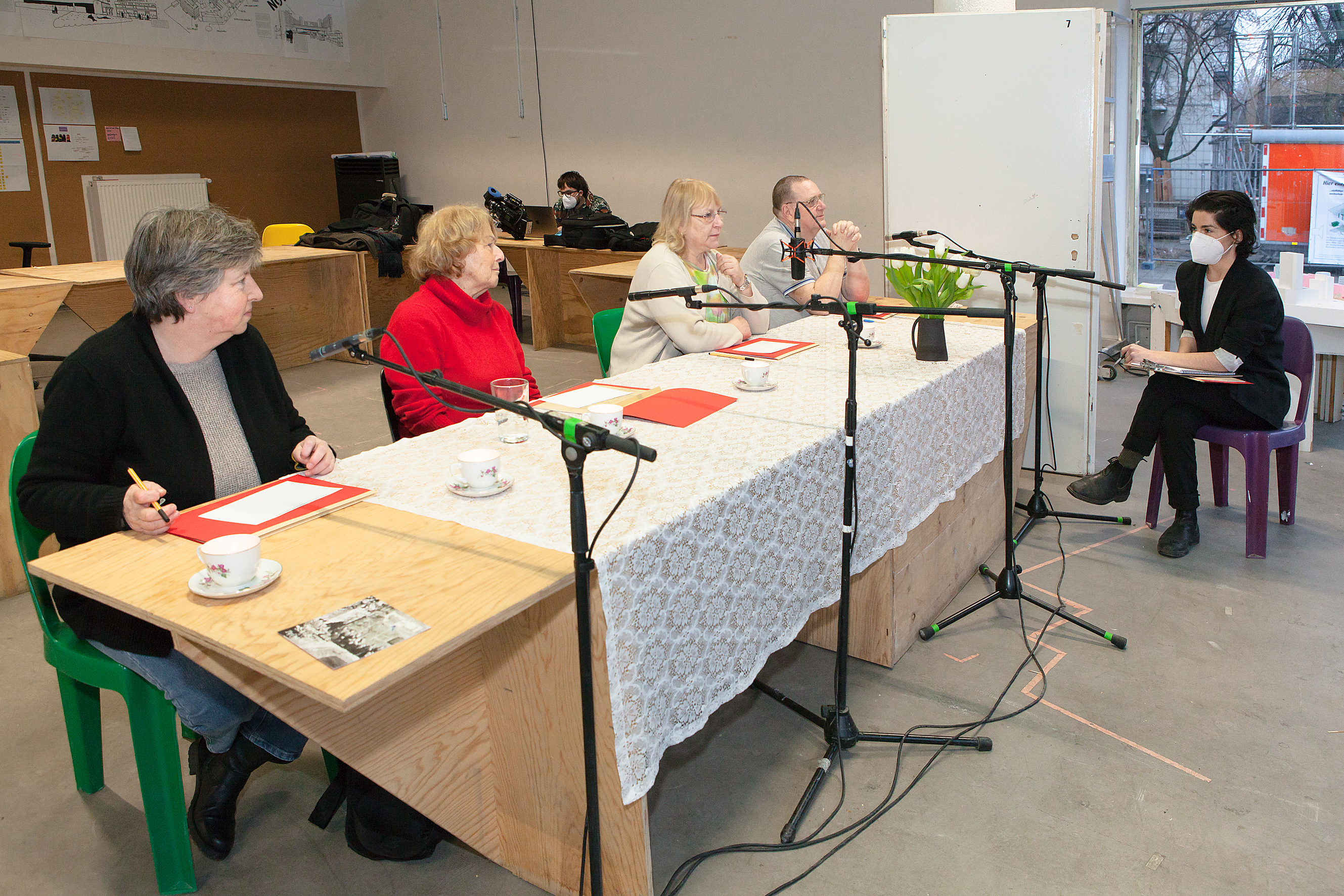
Following the opening event of the installation, Stein and Kathrin sat down together again to reflect on this phase of the project and how they can collaboratively bring it into the future.
RSW: Kathrin, I’d like to ask you to reflect on your experience of this phase of Fügung des Schicksals. What did you expect going into it? What was surprising? What are you curious about? What would you have liked to have seen more of? What has stuck with you? I’m very welcoming to constructive criticism.
KG: Stein, the night after the event on January 27, I dreamed about both of us. In my dream we were sitting across from each other at the table in my living room and you told me that you wanted to leave Germany again. I was sad in the dream because I thought: We are not finished yet. And I asked you for patience with the sentence: "But Stein, soon it will be warmer here, in January everyone always wants to leave."
What remained of the dream: the feeling that you have made a beginning, but nothing is finished yet. On January 27, it was cold and raining a bit, I thought that people here need time and rituals or even translations to realize and to feel! that the past hurts the worst when you try to amputate it. So such a phantom pain that we can't explain where it comes from. I would like to know if you (we) manage to leave something here that we can continue to work with and on. So nothing finished. A task, a request. I don't even know what that might look like. I imagine all of us writing the name of a dead person or a dead person on our doorbell. Because what really surprised me: How deep the impression is when you just read the names aloud. I'll probably never be able to make chicken soup again without thinking about it. Is that memory work already?
KG: You came to Germany at a time when we have to ask ourselves why this country appears threatening to others. We build walls and border fences to keep out people in need. I am very depressed and also a bit resigned because history always seems to repeat itself. Karl Marx said that if it is repeated, then only as a farce. But perhaps, coming from afar, you have a completely different view of all this. Do you think our society is open? Do you like it here?
RSW: My identities place me in a position of relative privilege in Germany. My skin is white, my education is formal and advanced, I don’t have disabilities, I’m a (somewhat) cis-gendered woman, and I hold dual citizenship to two of the most powerful countries in the world: the USA and Germany. Speaking fluent English, and basic German, also puts me at a professional and social advantage. There is also an odd privilege of being a Jew in a country in which many people feel immense guilt and responsibility directed toward a group of which I am a member.
However, I have also experienced more casual misogyny and cis-gender normativity here in Berlin than I’ve experienced in the States. I have also felt type-caste as a representative of “the Jews”. Additionally, although I’m legally a German citizen, I am a German “other” always to be qualified by a hyphenated nationality: German-Jew. I get stared at here in a way I’m not looked at elsewhere, particularly by people who I perceive to be elderly (non-minority) German. I don’t know what feelings are behind this gaze and it can feel unsettling and othering.
And it’s abundantly clear to me that any discomfort I feel is amplified in anyone who enjoys fewer privileges here than I do. I believe that Germany still has a lot of work to do to become an open society. However, I also do like it here. These are two conflicting truths that I hold.
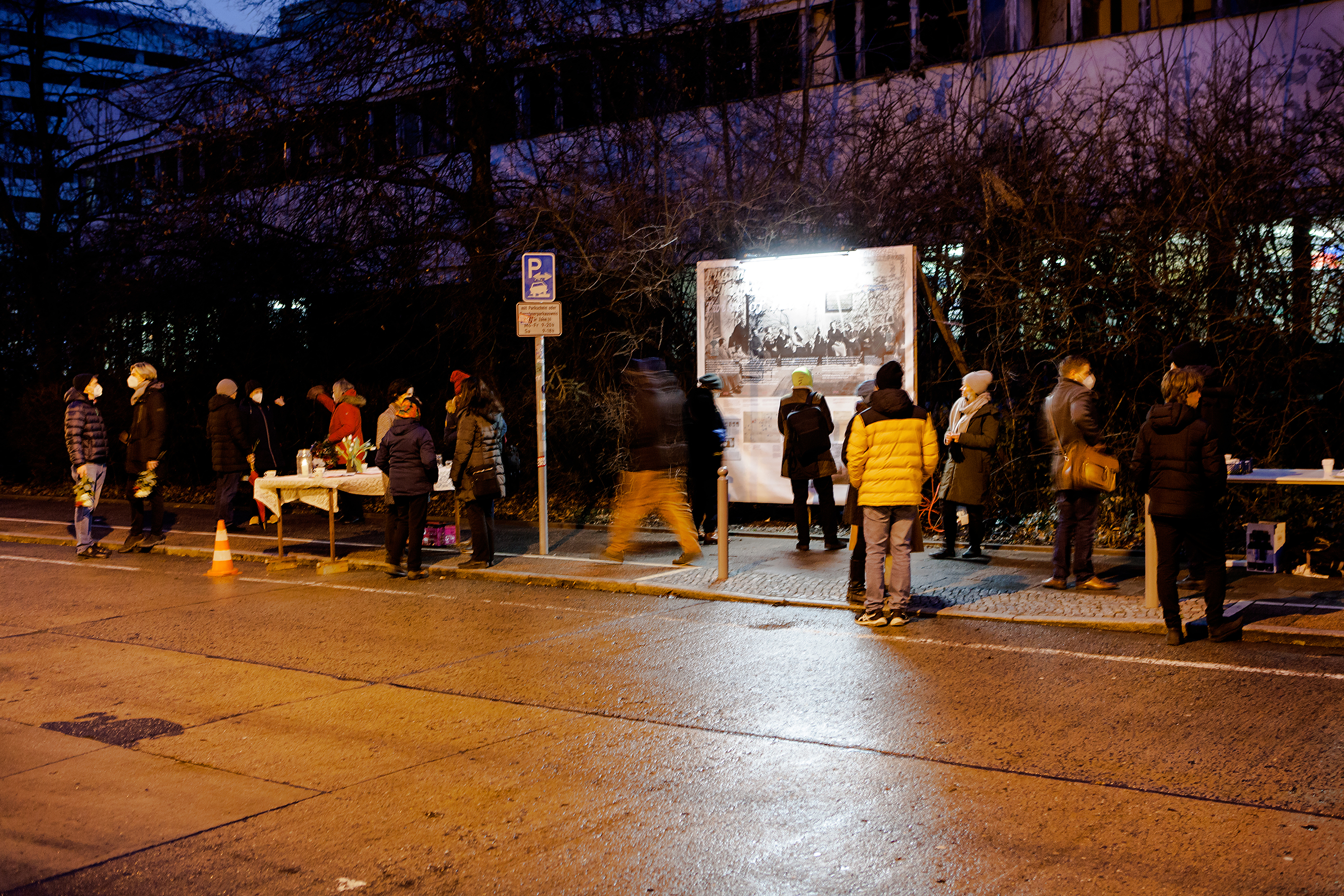
To learn more about Haus der Statistik, click here, and Fügung des Schicksals [Twist of Fate], click here.
